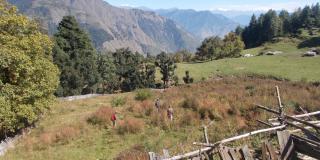
Human beings have pushed the planet to the brink. The climate and biodiversity crises are raging. Food insecurity is increasing. As leaders cast about for solutions, they could start with tried and tested approaches that are already helping communities to become more resilient in the face of these multiple threats.
Permaculture might not be a term that you’ve heard of before. But it is one of the solutions out there – a set of ecological design principles that promote environmentally friendly solutions for how we grow food and create sustainable human habitats: our health, our communities and our economies.
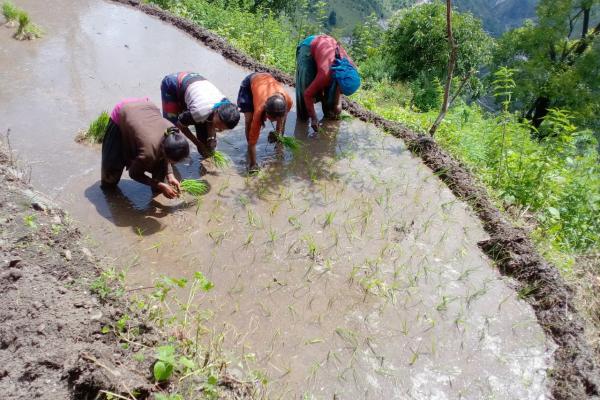
I discovered permaculture when I started volunteering with charity VSO in Nepal in 1985, during a placement in the remote western district of Jajarkot. The appeal for me came from having seen other kinds of development that disregard local knowledge – and fail. Instead, permaculture places a high value on indigenous expertise, and identifies where small inputs of appropriate technology and education can complement it to make huge differences.
I applied for a VSO volunteer grant to help fund a pilot project in the district centre of Jajarkot. The communities in Jajarkot are some of the most poor and marginalised – lacking access to education, health care, food security and credit. The environment is challenging – high altitude, remote and steep, with little infrastructure of roads, power and communications. In this context, permaculture seemed like it might have something to offer.
Using an acre of degraded farmland, I founded a permaculture demonstration and training centre, which grew into the Jajarkot Permaculture Programme (JPP). Over a decade later, this tiny pilot scheme had evolved into something much bigger than I could have possibly imagined.
JPP became an array of projects spanning four districts, 65 villages, eight resource centres (working farms), with 120 staff and volunteers, and a membership of 12,000 farmers that successfully spread environmentally friendly practices and ideas in line with existing cultural traditions. I now work with a third generation project, the Himalayan Permaculture Centre, based in Surkhet and Humla districts.
So how does it work, and how did this happen?
Fundamental to our approach is that we work by invitation. Only after farmers invited us, once, twice, even three times would we visit their village. This means the community is committed, and is essential to shifting the ‘done to’ dynamic of many other types of development. Before doing anything, we spend a lot of time observing how farmers operate. Watching before we act means understanding the context, the resources, constraints, and what the farmers do.
The Centre works through four kinds of activity. Firstly, demonstration. Seeing is believing, so we begin by showing farmers how they can use local skills and resources, with external inputs as appropriate, to build a sustainable and regenerative agriculture.
This includes techniques like minimum or no tillage, green manures, seed saving, polycultures, composting, biofertilizers and agroforestry (which brings the forest onto the farm). Next we offer training, so that farmers can come back and learn methods they want to implement.
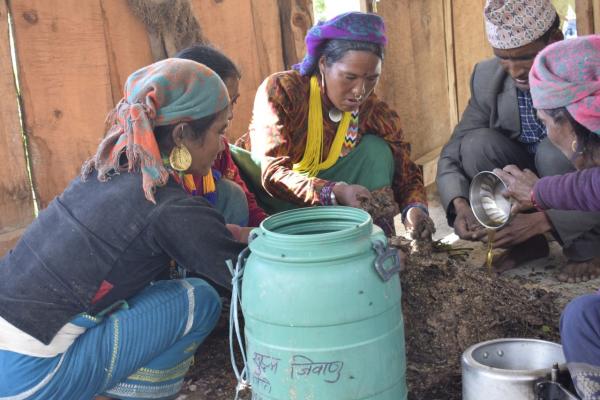
Thirdly, we offer resources, so that farmers return home from training equipped with the materials they need to put their training into practice. This includes seeds or seedlings, a specially developed farmers’ handbook of best practice, and videos that they can watch on their mobiles.
Finally, we also carry out research. Farmers can’t afford to lose out by trying a new crop or method that fails, so research helps us to discover new techniques they can put into practice with confidence.
To the whole permaculture approach, volunteering and peer-to-peer networks are key. The centre employs local people for its core activities, but the wider movement is driven by volunteers. Because they see the value of the work, farmers will give their time. This commitment also drives the development of practices spreading organically from farmer to farmer, making it a lasting approach.
It’s many years now that I have been based back in the UK. What I learnt in Nepal I have been putting into practice on my own smallholding in North Herefordshire, where we run permaculture courses. I visit Nepal regularly and am back with VSO as an ‘e-volunteer’, working with volunteers based in their own countries and communities giving advice, and facilitating workshops on agroecology and sustainable, nature-first farming methods.
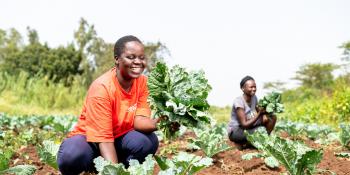
Resilient livelihoods
Ensuring people have the skills needed to support themselves and their families.
Over 400,000 people benefited from our work supporting livelihoods using our current strategy.
UKAid funds this work through the Volunteering for Development programme, based on the belief that poor and marginalised people in developing countries have the power, courage and desire to help themselves. VSO’s aim is to support and enhance their aspirations.
The work that has been done historically by the communities in Jajarkot, and more recently in Surkhet and Humla districts, more than testifies that with the right skills, training and support, communities can take control of their own development and ownership of their own solutions.
It couldn’t be clearer that we need to stop harming our planet, and reconnect with nature. When we started regenerative farming and development methods using a permaculture approach in the 1980s, people dismissed us as idealistic hippies. Now, science has caught up with these methods and shown us that it’s the most sustainable way to feed people.
This trend even reached the UN Food Systems Summit in September, which saw the launch of a new global coalition on argoecology. While it’s encouraging to see these commitments happening at the highest level, there is a real danger that without building on community knowledge, such initiatives will make the mistakes of the past.
As over three decades of permaculture in Nepal shows us, we have the right solutions – so let’s run with them. There’s no time to lose.
Chris Evans is Advisor to the Himalayan Permaculture Centre, and volunteers with VSO.
Read more

A ripple of change: how VSO volunteers are transforming communities
Every act of volunteering begins with a choice — a decision to act out of a desire to make a difference. Across the world, VSO volunteers are proving that one spark of action can ignite something much bigger.
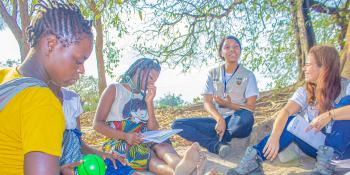
The two volunteers empowering girls and young women in Mozambique
Nelma and Carmirene and are two volunteers working on VSO's EAGLE project in Mozambique. For Nelma and Carmirene, education is not just about school, it is about meeting people where they are and using the right tools to challenging harmful norms. Here are their stories.
Opening doors to safety, education, and a brighter future
For girls in Karamoja, the poorest region in Uganda, being forced into early motherhood is all too common. This Christmas, you can open the doors to Safety, Education, and a Brighter Future.
